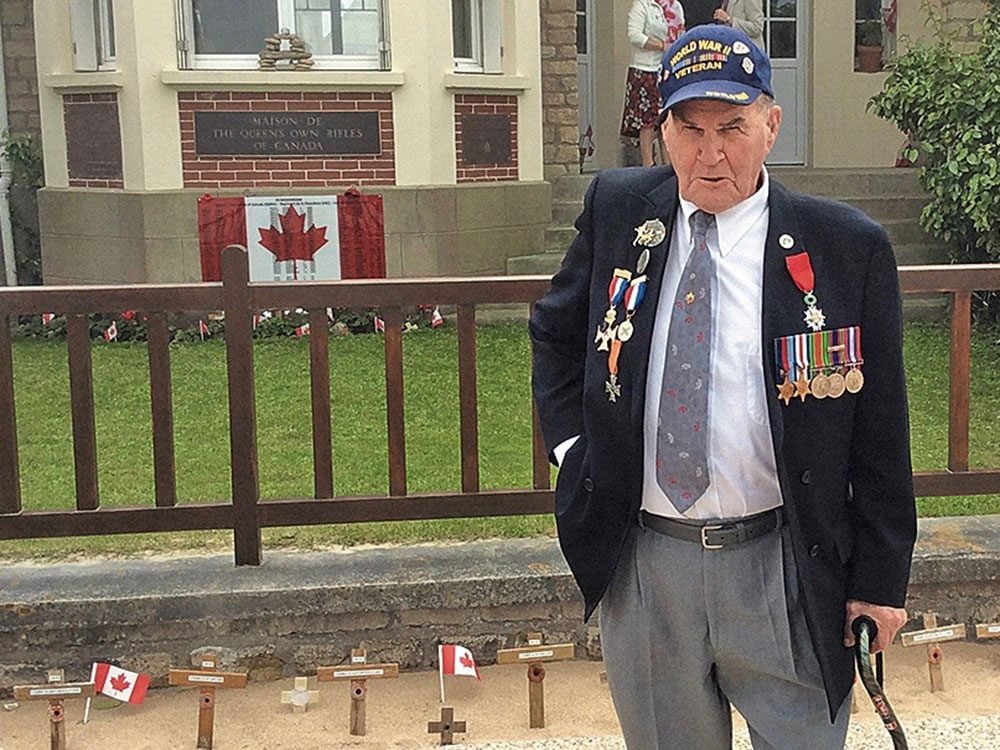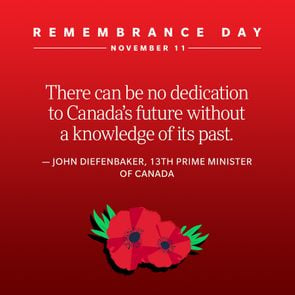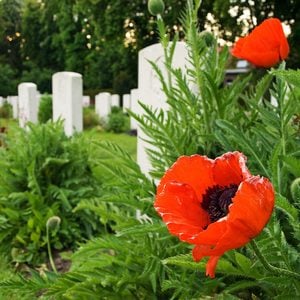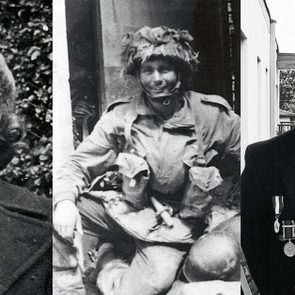14,000 Canadians Stormed Juno Beach on D-Day—My Father Was One of Them
As a young boy growing up in Port Hope, Ontario, my father Harold Rowden never imagined that he would one day travel to Europe to fight with 90,000 other Allied soldiers in the Normandy Invasion to oust the Nazis.

A reluctant hero
June 6, 1944, 19-year-old Harold “Rowdy” Rowden (my father) stepped into the cold water of the English Channel at Juno Beach and became part of history. It was a day that played a large role in changing the outcome of the Second World War and the course of history.
Alongside Utah Beach (the American landing zone), the assault on Juno is widely considered the most strategically successful of the D-Day landings. Juno Beach, a 10-kilometre stretch of French coastline, was one of five beaches in the Allied invasion of German-occupied France known as the Normandy landings. It was primarily the responsibility of the Canadians to take Juno with some air power, sea transport and mine sweeping being provided by other Allies.
It’s said that the code name Juno arose because Winston Churchill considered the original name—Jelly—inappropriate for a beach on which so many men might die. He insisted on a change to the more dignified name of Juno.
As a young boy growing up in Port Hope, Ontario, Harold never imagined that he would one day travel to Europe to fight with 90,000 other Allied soldiers in the Normandy Invasion to oust the Nazis. He’d signed up at 15 years of age because there was “nothing going on in Port Hope” and he’d make $1 and 10 cents a day—a hefty enough sum in those days. He was assigned to the 3rd Division of the 13th Field Regiment and trained to be a dispatch rider.
Training in Scotland helped prepare Harold for battle and for following orders, and it changed him from a boy into a man. On June 5, 1944, at Southampton, England, when he boarded his ship for the trip across the Channel, he began to truly understand what he would face. The Channel was rough, with waves two metres high, which made the crossing very difficult. The ships, landing craft and men were tossed around so much that many of the young recruits became violently seasick. By dawn, the weather was still bad, but the landings were a go. In preparation, destroyers began pounding the German coastal defence positions, while the bombers overhead dropped thousands of tons of bombs. Everything was on fire—the sky and the entire coastline. Harold thought it must be like hell. The noise was deafening as thousands of engines roared and bombs exploded around them; the air the men breathed was crackling and filled with smoke.
Against all odds
General Eisenhower’s voice came over the loudspeaker and told them, “You are about to embark on the Great Crusade… The eyes and ears of the world are upon you.” Their training had involved firing a gun with no one firing back; now Harold and his comrades were about to face a battle-hardened enemy. It was into this mayhem that Harold entered when the landing ramp dropped and he began the deadliest run of his life to the sound of a loudspeaker blaring, “Get off the beach, get off the beach!” As well as coping with the rough and cold waters, there were obstacles and minefields to be avoided. Sadly, many young men didn’t even make it to the shore; they drowned before they even started. Harold, with his bike, and his comrades waded ashore and directly into the killing zones of the German gun positions. The Germans were shielded by the brick seawall and many Canadian soldiers were gunned down in the water or on the beach. It was hard combat and the soldiers used raw courage, grenades, rifles and bayonets to storm the German nests.
The brave Canadian soldiers didn’t hesitate to advance despite the loss of countless numbers of their platoons. Through the terror of battle, they found the courage to keep going. Fourteen thousand Canadians stormed Juno Beach on D-Day and their bravery and achievements were remarkable. By the end of the day, they had progressed further inland than any of their allies and had smashed the first line of German defences. Harold fought beside his friends, people he had signed up with, lived with and trained with, and they found the courage to endure the fierce and frightening battle. They had hundreds of casualties, wounded and many others taken prisoner, but ordinary young Canadian boys accomplished what many had thought was impossible.
Harold went ashore near the town of Courseulles-sur-Mer and once the beach had been secured and the advance inland began, his “job,” as a dispatch rider, truly began. His task was to transmit coded messages to his commander from various observation posts. He was a vulnerable target, riding out alone multiple times a day on his Norton motorbike—easy pickings for any sniper.
After only a few days in France, Harold’s regiment again came under direct attack. He was knocked flat by a deafening, violent concussion and when he staggered to his feet he found four of his comrades dead and his commanding officer on the ground, bleeding profusely from a piece of shrapnel through the neck. With only the field dressing he had stuffed into his helmet, Harold covered the wound and applied pressure until help arrived—he is credited with saving his officer’s life.
On July 29, at the Battle for Caen, during intense enemy shelling, Harold was hit with a blast and thrown against a truck, losing consciousness. He only remembers waking up in a field hospital. His left leg was completely mangled, with the tibia busted to bits. Harold doesn’t know how the doctors coped that day as soldiers were being bought in by the hundreds, many bleeding profusely with serious wounds. Many had their legs or arms blown off; Harold was unable to walk but he was alive! His service to his country was over.
In December 1944, he was transported across the Atlantic aboard the SS Letitia, an ocean liner turned hospital ship. Back in Ontario, he spent six months in Kingston General Hospital as his wounds healed.
Aftermath
Since participating in the D-Day raids of 1944, the 93-year-old veteran has been back to France six times, mainly to Juno Beach. His name is among those of veterans engraved on the monuments in front of the Canadian Juno Beach Centre in Courseulles-sur-Mer—the same beach where he went ashore all those years ago. Harold has eight medals for his service, with the latest being France’s highest honour, the rank of Knight of the French National Order of the Legion of Honour. France has never forgotten the sacrifice of those Canadians who went to liberate French soil.
My siblings and I are very proud of our father. He doesn’t like to talk about the war and has never considered himself a hero. He says he did only what was asked of him and he’d do it again to help protect his country—a land as magnificent as Canada. He says he’ll answer questions when he needs to, but “there’s no glory in killing a man, you just try to get it out of your mind.”
Check out more Remembrance Day stories from Canadian veterans.






